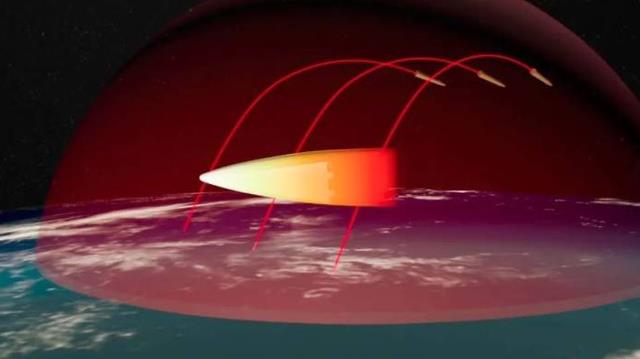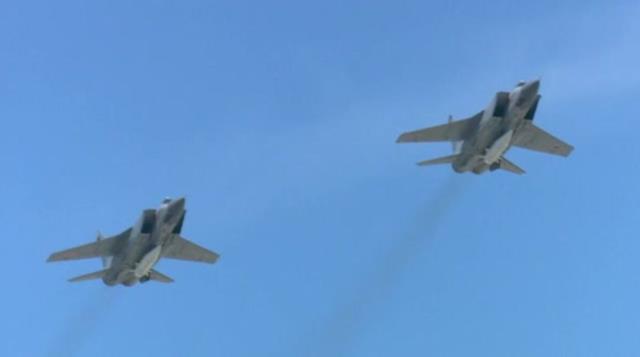The first "Pioneer" strategic missile regiment is on duty during the year! Russian hypersonic strike system has basically taken shape.
[Global Network Reporter Zhang Haichao] On August 10, the Russian military intensively announced the latest progress of its various hypersonic weapons: the first "Pioneer" hypersonic strategic missile regiment will be fully loaded into combat duty in the fourth quarter of 2021; The "Zircon" hypersonic missile completed the national acceptance in 2021, and the first Russian warships equipped with the missile were ready.
Considering that the Russian Air Force has already installed "daggers" earlier, in addition to the army, several Russian armies have been or will soon be equipped with hypersonic weapons, which can perform tasks ranging from intercontinental strategic nuclear strikes to campaign tactics and conventional operations, covering all kinds of targets on land and at sea. It can be said that the Russian hypersonic weapon strike system has basically taken shape. This is not a star and a half ahead of the US military.
 Russian "Pioneer" hypersonic glider breaks through the anti-missile interception effect map.
Russian "Pioneer" hypersonic glider breaks through the anti-missile interception effect map.According to a report by the Tass news agency on August 10th, Major General Andrei Cherevko, commander of the 13th Missile Division of the Russian Strategic Rocket Force, reported to Defense Minister shoigu: "The 13th Missile Division continues to take measures to replace the new strategic missile system. According to the 2021 mandate, the first missile regiment equipped with the’ Pioneer’ system should complete deployment and perform combat duty. "
Cherevko said: "Two well-based launchers with missiles are being prepared. Dressing is going on according to the schedule. The missile will be placed in the well-based launcher and ready to enter the combat alert (state) in the fourth quarter of 2021. "
It is reported that in December 2019, some of the first missile regiments equipped with "Pioneer" hypersonic strategic missiles were put into combat duty in orenburg region of Urals.
Cherevko also reported to Shao Yigu that the second intercontinental ballistic missile regiment equipped with "Pioneer" will be put into combat duty in the 13th Missile Division in 2023.
According to two other reports from the Tass news agency, Russian Deputy Minister Alexei Krivoruchko said on August 10th that the national test of "Zircon" hypersonic missile will be completed in 2021.
 Data Map of Russian Navy’s Test-fired Zircon Hypersonic Missile
Data Map of Russian Navy’s Test-fired Zircon Hypersonic MissileOn the same day, Rear Admiral Alexander Zalenkov, commander of the 11th submarine division of the Russian Northern Fleet, reported to Defense Minister shoigu that the new Kazan 885M nuclear submarine, which was commissioned in May this year, could carry a Tsirkon hypersonic missile to strike targets on the ground and at sea. The submarine "has better stealth, higher maneuverability, upgraded communication and sonar system, and better living conditions". According to the development strategy, the 855M nuclear submarine will become the pillar of the Russian navy’s attack submarine force.
According to the report, the Avangar glider can fly in a dense atmosphere at a hypersonic speed of up to Mach 28 and break through any anti-missile defense system. Russian President Vladimir Putin first mentioned the "Pioneer" hypersonic weapon in March 2018.
"Zircon" is the first hypersonic cruise missile in the world that can use its own engine thrust for long-term aerodynamic flight in dense atmosphere. Its speed can reach about Mach 9, and its maximum range is said to reach 1000 kilometers. Earlier Russian media reports showed that the Russian Navy had a number of new surface ships and nuclear submarines that would be equipped with "zircon" for the first time.
 MIG -31K mounted "dagger" hypersonic missile
MIG -31K mounted "dagger" hypersonic missileOn the whole, Russia already has a variety of hypersonic weapons, ranging from strategic strikes ("Pioneer") to campaign and tactical strikes ("Dagger" and "Zircon"), ranging from intercontinental level to hundreds of kilometers, which can be used for both strategic nuclear strikes and conventional attacks, covering various target types on land and at sea.
In addition, Russia is still developing updated hypersonic weapons, which are used to equip Su -57, future and active improved strategic bombers, etc., and perform more diverse combat missions.
At present, except for Zircon, which is undergoing the final acceptance test, the other two "Dagger" and "Zircon" have been installed in the Russian Air Force and Strategic Rocket Force and put into use. If the "zircon" is accepted successfully, the blank of the Russian navy will soon be completed. With the development and testing of various types of hypersonic weapons, the Russian army is also making preparations at the same time, forming a relatively complete system work from the aspects of receiving troops, weapon platforms and infrastructure. From the current situation, the Russian multi-service hypersonic weapon strike system has basically taken shape. This is not a star and a half ahead of the US military.
Reporting/feedback